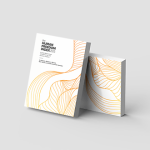
It is hard to ignore the headlines about US corporate profit margins stabilizing at their highest level in decades. This information has provided plenty of ammunition for populist commentators and politicians who blame corporate greed for the sharp increase in postcovid consumer prices and ignore the elephant in the room, which is a more than 40 percent increase in broad money supply after March of 2020 mostly due to central bank balance sheet expansion and the monetization of massive budget deficits.
That is not to say corporate greed does not exist, but one should note that corporations were also greedy in 2015 when inflation was only 0.7 percent. Why have they been rapidly raising prices and expanding their profit margins only after covid? I want to take you through a simple yet representative example that shows how inflation increases profit margins and not the other way around.
Consider a manufacturer of copper cookware that generates all its revenue from the sales of ten thousand copper pans every year. Each year the manufacturer pays $1 million to buy the raw material and pay the labor required for manufacturing those ten thousand units, then sells each unit at $120, which adds up to total sales of $1.2 million. If there is no inflation, the manufacturer can pocket $200,000 from the sales proceeds and use the remaining $1 million to buy the raw material and pay the labor needed to manufacture ten thousand pans next year. This amounts to a 20 percent pretax profit margin.
As long as the input costs do not rise, the manufacturer can do that year after year and keep its profit margin at 20 percent. However, if some input costs, such as copper prices, go up, this changes the whole equation. Imagine an inflationary environment where the manufacturer expects the cost of raw materials and the cost of labor for next year to go up on average 10 percent to $1.1 million for producing ten thousand units. The manufacturer has to increase the price of copper pans to be able to collect at least $1.3 million in sales.
After pocketing $200,000, they end up with $1.1 million which is just enough to pay the higher cost of raw material and labor for the next year’s production of ten thousand pans. However, for the purposes of profit margin calculation, the manufacturer has to report this year’s cost, which was $1 million amounting to a 30 percent profit margin. The reality is that the manufacturer is not getting wealthier. They are still only pocketing $200,000, yet the profit margins are inflated.
You may ask how the manufacturer can figure out that input costs are going to be higher next year. While manufacturers do not buy raw materials every day, they still track the real-time price of the material they need. The copper cookware manufacturer that observes the price of copper moving from around $3.50 a pound to more than $4.50 a pound in three months in 2021 has to adjust its prices even if it has enough copper for many months’ worth of production.
Failure to do so results in the manufacturer falling short when they attempt to buy more copper if prices do not come back down. The forward-looking nature of decision-making by producers and manufacturers compels them to raise prices when they see a trend of rising input costs.
Yet the profit margins are calculated using a backward-looking methodology. However, this is a transitory impact. As historical data suggests, a sharp rise in corporate profit margin is almost always followed by a sharp decline in those margins when the lagging rising costs catch up with the higher sales and the inevitable recession hits.





